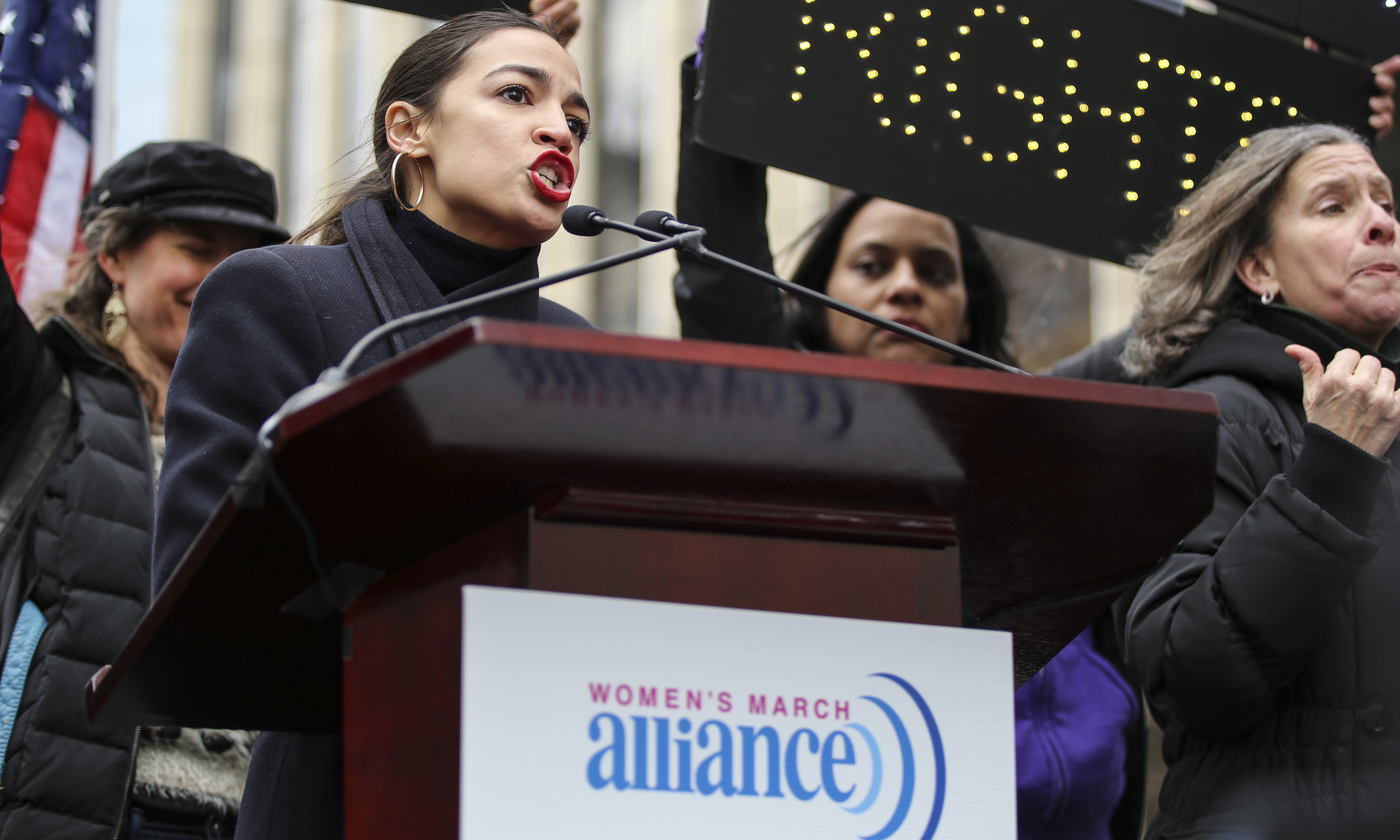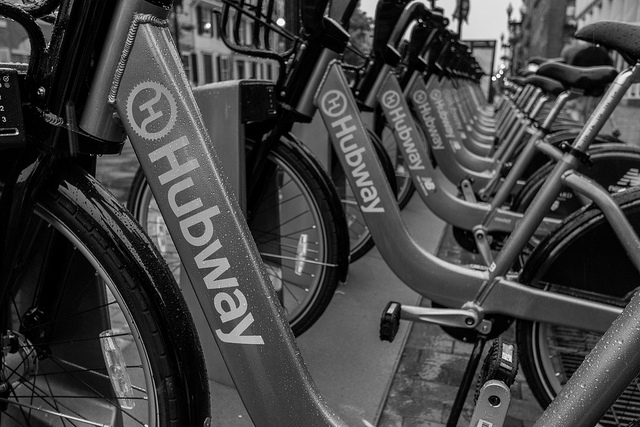On January 1, House Speaker Nancy Pelosi unveiled plans for the “Select Committee on Climate Crisis.”[1] Chaired by Rep. Kathy Castor of Florida, the committee will research and develop recommendations on strategies and policies to make permanent reductions in pollution and other contributors to the climate crisis. Yet arguably the most vocal politician on climate change was left off the committee entirely: Alexandria Ocasio-Cortez, the freshman representative from New York’s 14th Congressional District.
Her exclusion mirrors increasing tensions within the Democratic party. New progressive leaders, such as Ocasio-Cortez, continue pushing the party’s discourse further to the left, with critical topics like climate change moving to the top of the agenda. More seasoned and established Democrats, such as Pelosi, are attempting to balance these new, more progressive priorities with older, more moderate ones. To make matters more contentious, this back-and-forth conflict is unfolding as candidates begin to seek the 2020 presidential nomination. However, if the Democrats want to be successful, they must take from both the old and the new. Unification is key to winning majorities and elections, and real, fundamental change will be impossible without it.
It’s easy to view the divide between the new wing and the establishment wing as a split between the politics of the people and the politics of the party. Ocasio-Cortez and fellow progressives, such as Rep. Ayanna Pressley and Sen. Bernie Sanders, know how to appeal to younger voters. Their pushes for a lower voting age and tuition-free college particularly affect this younger demographic. They appeal to the country’s future, and their policies feel more like the future standards of the Democratic platform.
This argument has its strengths. This emerging electorate is largely Democratic, and securing their votes is essential to the party’s success[2]. However, much of the young electorate lives in densely populated, metropolitan areas; the voting power of these urban centers is diminished by the Electoral College.[3] If Democrats want to be representative of the entire country, their policies must reach beyond these young, urban voters. Consequently, the party must turn to what many view as Hillary Clinton’s largest mistake: the Midwest.
These voters play a larger role than their Electoral College importance. Many of these blue-collar workers were the traditional, labor-focused base of the Democratic party. As manufacturing has decreased, these states have faced economic decline and little aid. With the growing technological industry on the West Coast and the centralization of politics in Washington, those in the center of the country have faced a dearth of political attention.
Simply put, many of these voters are discouraged. Sixty-seven percent of non-college educated whites voted for Trump, but the amount of jobs offshored by federal contractors reached an all time high during his first year.[4] Many who voted for Trump still feel excluded from recent economic progress.[5] But despite their voting patterns in 2016, Midwestern voters pave a potential route for Democrats to recapture the White House in 2020 and become the ultimate party of the people. If the party wants to be successful, it must combine progressive goals that attract younger, urban voters with policies that still appeal to older, more rural voters.
Where the Party Was
In 2008, Barack Obama handily won the Great Lakes region of the Midwest: Michigan, Ohio, Indiana, Illinois, Wisconsin, Minnesota, and Iowa.[6] In 2012, he won all of these states again, except for Indiana. This upper-Midwestern success, combined with Democratic strongholds on the coasts, enabled his Electoral College win.
In 2016, Hillary Clinton only won Illinois and Minnesota—barely. In theme with her memoir about the election, it is hard not to ask the question: What happened? Clinton famously failed to visit Wisconsin during the general election and has been criticized for failing to prioritize these Midwestern states. However, the loss stretches beyond Clinton herself.
The 2008 recession hit especially hard for working-class Americans in the manufacturing industry—a notable part of the Midwestern, Democratic base. While Obama managed to end the recession and create 16 million jobs, 50% of Obama-Trump voters said that their incomes were falling behind the cost of living, and another 31% said that their incomes were merely keeping pace with the cost of living.[7][8] The data suggests that many Midwestern voters felt that their economic anxieties had not been addressed, and turned to Donald Trump, a new face in politics.
Where the Party Is
Economic anxiety is a prominent concern for many Americans. In particular, young students and working professionals struggle to keep up with the rising cost of living. Individual earnings for millenials have remained mostly stagnant over the past 50 years, and more millenials have outstanding student debt in greater amounts.[9]
Obama acknowledged these issues while in office, but his policy implementations did little to specifically target young voters. In 2016, more people voted for Bernie Sanders than for Hillary Clinton and Donald Trump combined, despite the fact that Clinton’s platform was more closely aligned with Obama’s than Sanders’s.[10]
Progressive politicians like Ocasio-Cortez and Sanders recognize the challenging reality for young people in America. Their push for policies like student debt relief and a livable minimum wage specifically target younger voters in the hopes of preserving their success within the demographic. Their work has been successful: 31% of the eligible youth voted in the 2018 midterms, while only 21% voted in 2014. Furthermore, 67% of them voted for House Democrats.[11]
The party is caught between these younger, progressive members and older, more established members. But ultimately, the party is leaning toward the left and focusing on issues that appeal to diverse, young, and urban voters. This is evidenced by the 2020 presidential campaigns. For example, nearly all candidates have supported Ocasio-Cortez’s Green New Deal.[12] Despite their varying platforms, the candidates cannot deny the power of this youthful, diverse voting bloc. While these policies provide relief from all-too frequent white, male-dominated politics, they do not guarantee success within the electoral college, or even in Congress. If Democrats want to be electorally successful, they must find a way to appeal to red and purple states. In particular, they must find a way to captivate and win the Midwest.
Where To Go From Here
Finding this balance is key if Democrats want to be legislatively successful. Hillary Clinton may have won the popular vote in the 2016 presidential election, but Donald Trump still won the Electoral College A large portion of the country geographically does not affiliate with the Democratic Party. In order to preserve the health of the country’s political systems, both parties must find common ground and support productive policymaking. By appealing to the interests of more moderate voters, Democrats can inherently find more common ground with Republicans than by solely pursuing progressive policies.
The path to success with Midwestern voters largely lies within economic policies. The Midwest’s economic hardship is largely attributed to the lack of once-abundant manufacturing jobs. Cities like Milwaukee and Detroit have attempted to reinvent and develop, but lack the necessary capital and industry needed to do so. It’s unrealistic to expect that all jobs can be brought back to the region. Nonetheless, the entire region needs economic action in order to support its citizens. Mayor Pete Buttigieg of South Bend, Indiana, a candidate for the 2020 presidential nomination, said that the Midwest needs “a way forward that isn’t soaked in nostalgia…we have a relationship to our past, but we’re not trying to recapture it.”[13]
A large contribution to Midwestern job market difficulties stems from the advancement of technology. Many industries, like manufacturing and agriculture, have dramatically changed due to automation.[14] These advancements have cost many jobs, but are difficult to stop; what business would sacrifice a more efficient and affordable method of production?
The Midwest is in dire need of strong industrial sectors to provide employment and economic growth. In 2017, 80% of venture capital investment went to healthcare technology; companies like Epic in Madison and Allscripts in Chicago have created thousands of jobs and established the industry’s regional presence.[15] However, these jobs require skilled workers, often with technological training that older workers lack and many job-seekers cannot afford. While this industry brings positive change to the region, relying on a sole industry for economic growth can be dangerous.
The same technological advances that have hurt the Midwestern job market provide a potential alleviation. By encouraging the manufacturing of agricultural technology within the Midwest, Democrats have several potential routes for support. Primarily, the return of some manufacturing to the Midwest will strengthen economic development and create jobs. Furthermore, developing this technology in the Midwest will allow the farmers who use the technology to be more involved in the process and guarantee greater success on all ends. The technology is not going away; by encouraging more investment and funding for this industry, Democrats can attract the support of a variety of Midwestern voters.[16]
The Midwestern economy has also been hurt by agribusiness monopolies that push down the prices of what farmers sell. These monopolies have devastated farms, particularly smaller, family farms that have persisted throughout generations. Farms have become increasingly expensive to run, largely due to technological advances, and most non-monopolistic farms simply cannot turn a profit.[17]
While it’s easy to blame this issue solely on the evolution of technology, policy actions by both parties have played a large role. The lack of control over these agribusiness monopolies has enabled them to drive up the prices of supplies, such as seed and fertilizer. Furthermore, these large corporations are able to produce increasingly large amounts of crops and livestock. By flooding the market, they drive down the sale price.[18] The complexity of big agriculture persists, but there are potential policy implementations to be made. If Democrats push for regulations on these businesses and support for smaller farmers, they can easily increase support from rural, agricultural regions.
Lastly, the Midwest needs more investment in education and career development in order to sustain and promote any economic development. This investment needs to extend beyond education; college education should be made more affordable, but there needs to be a simultaneous expansion of technical and non-collegiate opportunities. By making community colleges, trade schools, and two-year institutions free, Democrats could both start their push for tuition-free higher education and spark education and development within the Midwest.
It’s important to note that these policy goals don’t require sacrificing other Democratic priorities. Focusing on Big Ag does not mean forgetting about universal healthcare. Looking for ways to support more rural voters does not mean compromising protections for minority rights.
There’s no denying that bigotry is prevalent and problematic within our present political climate. Racism, sexism, homophobia, and countless other issues need to be addressed and brought into our current political narrative. Midwesterners are mostly white, and, consequently, most do not share the struggles of being a part of a minority group. However, many of them have been economically disadvantaged and largely ignored as a political entity. By focusing on the commonalities between minority groups, young people, and Midwestern voters, the party can unite these seemingly different groups of people.
The worst mistake the Democratic Party can make is choosing a side. It cannot be about the people or about the party; it cannot be about Ocasio-Cortez or Pelosi; it cannot be about the coasts or the Midwest. If the Democratic Party wants to guarantee future success, it must fortify compromise, balance, and unity among these diverse viewpoints.
[1] “Pelosi Names Members of the Select Committee on the Climate Crisis.” The Speaker of the House Newsroom. February 07, 2019. https://www.speaker.gov/newsroom/2719/
[2] Perry, Stephanie. “Poll: Millennials Disillusioned About Midterm Elections.” NBC News. Aug 29, 2018. https://www.nbcnews.com/politics/politics-news/poll-millennials-disillusioned-about-midterm-elections-n904436
[3] Dreyfuss, Emily. “The Electoral College is Great for Whiter States, Lousy for Cities.” Wired. December 16, 2016. https://www.wired.com/2016/12/electoral-college-great-whiter-states-lousy-cities/
[4] Faraday, George. “Promises Broken #2: The Offshoring of American Jobs Continues.” Good Jobs Nation. August 2018. Accessed February 27, 2019. http://goodjobsnation.org/content/uploads/2018/08/Broken-Promises2.pdf
[5] Enten, Harry. “Trump has lost ground on his strongest issue: the economy.” CNN. January 28, 2019. https://www.cnn.com/2019/01/28/politics/trump-lost-ground-economy/index.html
[6] “2008 Presidential Election” 270 To Win. Accessed March 23, 2019. https://www.270towin.com/2008_Election/
[7] Amadeo, Kimberly. “Which President Created the Most Jobs?” The Balance. February 19, 2019. https://www.thebalance.com/job-creation-by-president-by-number-and-%-3863218
[8] Sargent, Greg. “Why did Trump win? New research by Democrats offers a worrisome answer.” The Washington Post. May 01, 2017. https://www.washingtonpost.com/blogs/plum-line/wp/2017/05/01/why-did-trump-win-new-research-by-democrats-offers-a-worrisome-answer/
[9] Bialik, Kristen & Fry, Richard. “How Millenials compare with previous generations.” Pew Research Center. February 14, 2019. http://www.pewsocialtrends.org/essay/millennial-life-how-young-adulthood-today-compares-with-prior-generations/
[10] Blake, Aaron. “More young people voted for Bernie Sanders than Trump and Clinton combined by a lot. ” The Washington Post. June 20, 2016. https://www.washingtonpost.com/news/the-fix/wp/2016/06/20/more-young-people-voted-for-bernie-sanders-than-trump-and-clinton-combined-by-a-lot/?utm_term=.f08d1d8955d6
[11] “Young People Dramatically Increase their Turnout to 31%, Shape 2018 Midterm Elections.” The Center for Information and Research on Civic Learning and Engagement. Accessed on February 27, 2019. https://civicyouth.org/young-people-dramatically-increase-their-turnout-31-%-shape-2018-midterm-elections/
[12] Cawthorne, Cameron. “Ocasio-Cortez: ‘Every Democratic Presidential Candidate Supports Green New Deal.” The Washington Free Beacon. February 16, 2019. https://freebeacon.com/politics/ocasio-cortez-every-democratic-presidential-candidate-supports-green-new-deal/
[13] Schor, Elana & Burnett, Sara. “How will the Midwest be won? Democrats ponder who could recapture voters in 2020.” The Chicago Tribune. January 31, 2019. https://www.chicagotribune.com/news/nationworld/politics/ct-midwest-democrats-election-20190131-story.html
[14] Segal, Michael. “How automation is changing work.” Nature. November 28, 2018. https://www.nature.com/articles/d41586-018-07501-y
[15] Wilkins, Pete. “Why Healthcare Startups Are Attracting The Most VC Dollars in the Midwest.” Forbes. November 7, 2017. https://www.forbes.com/sites/peterandrewwilkins/2017/11/07/why-healthcare-startups-are-attracting-the-most-vc-dollars-in-the-midwest/#436f967f2839
[16] Nordwald, Alexa. “The Future of Ag Tech in the Midwest.” Agricultural Professional. February 20, 2018. https://www.agprofessional.com/article/future-ag-tech-midwest
[17] Wise, Time. “Monopolies Are Killing Our Farms.” East Texas Review. April 13, 2010. http://www.ase.tufts.edu/gdae/Pubs/rp/WiseMonopoliesAndFarms13Apr10.pdf
[18] Kelloway, Claire. “How to Close the Democrats’ Rural Gap.” February 2019. https://washingtonmonthly.com/magazine/january-february-march-2019/how-to-close-the-democrats-rural-gap/



